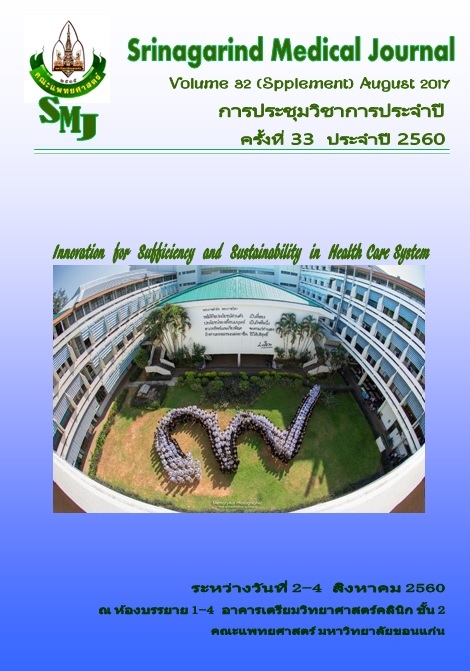An Eight-Week of Inspiratory Muscle Training Program Improved Chest Expansion in Subjects with Inspiratory Muscle Weakness: A Preliminary Study
Keywords:
Inspiratory muscle training, Maximum inspiratory pressure, inspiratory muscle weakness, six minute walk distanceAbstract
Background and Objective: Maximum inspiratory pressure (MIP) serves as an indicator of inspiratory muscle strength. It is still controversy whether an inspiratory muscle strength and chest expansion are improved after low resistive intensity of MIP training. This study aimed to examine whether 40% of MIP for 8 weeks training increase inspiratory muscle strength, chest expansion and diaphragmatic movement in subjects with respiratory muscle weakness.
Methods: Eight female subjects with respiratory muscle weakness, MIP less than 80% predicted, were recruited in this experiment. All subjects were measured MIP, upper chest, lower chest expansion, and diaphragmatic movement at baseline and post training. Respiratory muscle training program was performed by using a Threshold Inspiratory Muscle Trainer at 40% of MIP, 10 repetitions/set, 3 sets/day, 5 days a week, 8 weeks. MIP was evaluated weekly during a 8-week experimental period.
Results: It appears that the maximum inspiratory pressure progressively increased and sustained in the study subjects until the end of the training period. At the end of the training period, the MIP was higher than baseline values (-75.3 ± -10.2 cmH2O vs. -92.8 ± -16.5 cmH2O; p = 0.017). Moreover, a lower chest expansion (5.8 ± 1.4 cm vs7.3 ± 1.6 cm; p = 0.02) and diaphragmatic movement (4.6 ± 1.6 cm vs. 6.9 ± 1.5 cm; p = 0.007) were also increased after 8 weeks of training.
Conclusion: The findings of the current study suggest that inspiratory muscle training with 40% of MIP for 8 weeks improved inspiratory muscle strength and chest expansion in subjects with respiratory muscle weakness. The MIP training program may be useful for improvement of chest expansion in subjects, having an inspiratory muscle weakness.




